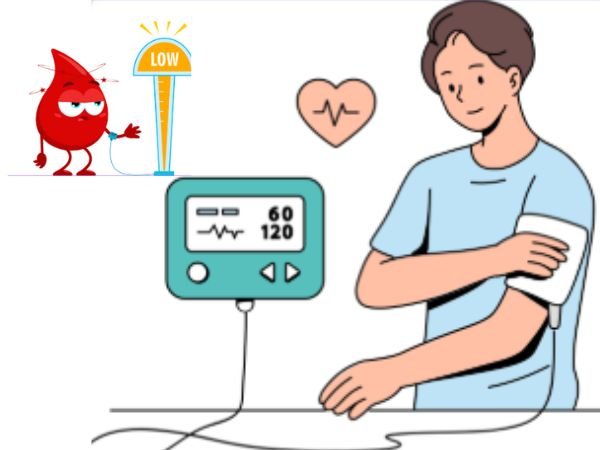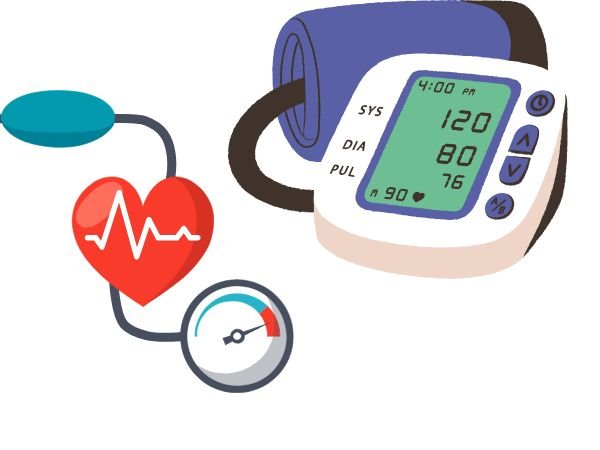Low blood pressure, also known as hypotension, may seem like a less serious health concern compared to high blood pressure, but it can be dangerous if left untreated. In this article, we’ll explore what causes low blood pressure, its symptoms, when it becomes risky—especially for women—and how it’s treated.
What Causes Low Blood Pressure?

Low blood pressure is due to the fact that there is reduced pressure of the blood on arterial walls than normal pressure. It may have various reasons for it and causative factors. They are generally caused due to dehydration, blood loss, a specific drug (beta-blocker or diuretics), or internal cardiac problems. Some endocrine diseases such as Addison’s disease or hypothyroidism are causes too.
It can fall suddenly due to rising too quickly from lying in bed or sitting (orthostatic hypotension) after pregnancy, or after a serious infection such as sepsis. It might be that, although on very rare occasions for some people just to have low blood pressure and nothing is the matter—this is called chronic asymptomatic hypotension. Persistent or chronic hypotension (systolic blood pressure <90 mm Hg) has been linked to impaired perfusion of vital organs and is thus an in-hospital patient risk factor to organ failure, as posted in The American Journal of Medicine.
Low Blood Pressure Symptoms

Indications of low blood pressure tend to be dependent upon the rate by which or how much the pressure falls. Continuous pressure needs to be maintained to enjoy a regular supply of oxygenated blood to the brain and even to the rest of the body. In case the pressure falls below what it should be, you may feel:
- Dizziness or light-headedness
- Fainting (syncope)
- Blurred vision
- Cold, pale, or clammy skin
- Weak or tired sensation
- Nausea
- Difficulty in thinking
Under severe conditions, low blood pressure will lead to shock, and that is where it can lead to faint pulse, shallow breathing, or confusion.
Why Low Pulse Goes Hand-in-Hand with High Blood Pressure?

Low pulse (bradycardia) and high blood pressure is an opposite pair. Forceful blood circulation implies high blood pressure and reduced number of beats per minute implies slow heart rate. Poor circulation and oxygenation is the result of this opposition.
Low pulse (bradycardia) and high blood pressure can result from:
- Beta-blocker drug overdose
- Abnormality of the electrical conduction of the heart (e.g., AV block)
- Hypothyroidism
- Athlete’s heart (in highly trained athletes)
In some, it can be a sign of a bad heart disease that requires a pacemaker or medication regimen change. In 2021, an article in The Journal of Clinical Hypertension reaffirmed that hypertension with bradycardia has the ability to do harm to cardiac arrest patients.
What is a Woman’s Dangerously Low Blood Pressure?

Females are lower-pressure than males. But if below 90 mm Hg for the higher reading, or below 60 mm Hg for the lower reading, it’s dangerous—especially if there’s a symptom with it.
Pregnancy hypotension is physiological because of changes in hormones and a demand for augmented blood supply. But very low levels will compromise fetal oxygenation or be an expression of pathologies like intraperitoneal hemorrhage or ectopic pregnancy.
Low blood pressure is more harmful if it induces dizziness, confusion, or blur as they are indicators of reduced brain perfusion. In a 2022 article published in Obstetrics & Gynecology, chronically low pregnancy blood pressure was revealed to double the risk of fetal growth restriction and delayed development.
What is Dangerously Low Blood Pressure?
Dangerously low blood pressure, or hypotensive shock, is a state where vital organs are no longer being properly supplied with blood. A systolic pressure of less than 70 mm Hg in most circumstances is fatal. It could be because of trauma, anaphylactic shock (allergy), bleeding, cardiac failure, or infection. Severe hypotension without treatment will result in damage to the brain, renal failure, or death.
Treatment immediately must include, i.e., intravenous fluid, drugs for raising blood pressure (vasopressors), and treatment for etiology. Over 50% mortality rates are encountered if hypotensive shock is not regulated within an hour of the accident, according to The Journal of Intensive Care Medicine.
Low Blood Pressure Range
120/80 mm Hg blood pressure, a healthy and normal one, is okay. Below 90/60 mm Hg is literally low blood pressure. But with symptoms, as “low blood pressure with symptoms,” it is otherwise.
Let us understand in some range description:
Systolic / Diastolic
Blood Pressure Status
90/60 – 120/80 mm Hg Normal (lower limit healthy)
< 90 / < 60 mm Hg Low Blood Pressure
< 70 / < 40 mm Hg Dangerously Low
If the individual has low blood pressure tendency but is without symptoms, then it will not be treated. But if there is weakness, lightheadedness, or confusion in association, then one should get a doctor visited.
Recurrent blood pressure < 90/60 mm Hg with symptoms must be evaluated for chronic hypotension or underlying disease, as per guidelines of American Heart Association.
Treatment of hypotension
Hypotension is treated depending on its cause. It is to be increased by fluid and salt intake, if due to dehydration. It is to be replaced or switched, in drug-induced hypotension.
Among the most common treatments are
- Fluid intake: Increase water intake in order to increase volume of blood.
- Salt intake: Only on doctor’s prescription.
- Compression stockings: Avoid pooling of blood in legs.
- Medications: Fludrocortisone or midodrine can be given to raise blood pressure.
- Dietary adjustment: Stand for longer periods, take small frequent meals, and rise slowly.
Researchers in Hypertension Research found that midodrine effectively increased blood pressure while standing in orthostatic hypotension patients without causing significant side effects.
Conclusion
Low blood pressure is not necessarily harmful or evil but is deadly, especially if there are indications to faint, get dizzy, or confuse. Although some individuals have low blood pressure without experiencing any complications, some others do. If you experience chronic or symptomatic low blood pressure, consult a health professional for proper diagnosis and individualized treatment.
Properly treated low blood pressure can be effectively managed—regaining energy, safety, and quality of life.


